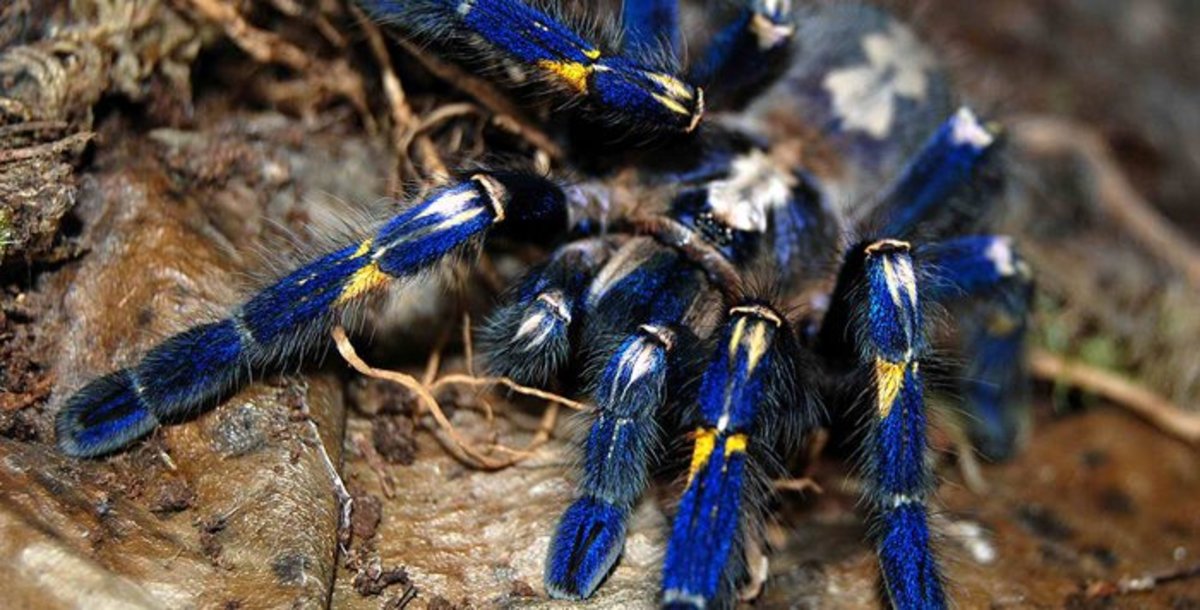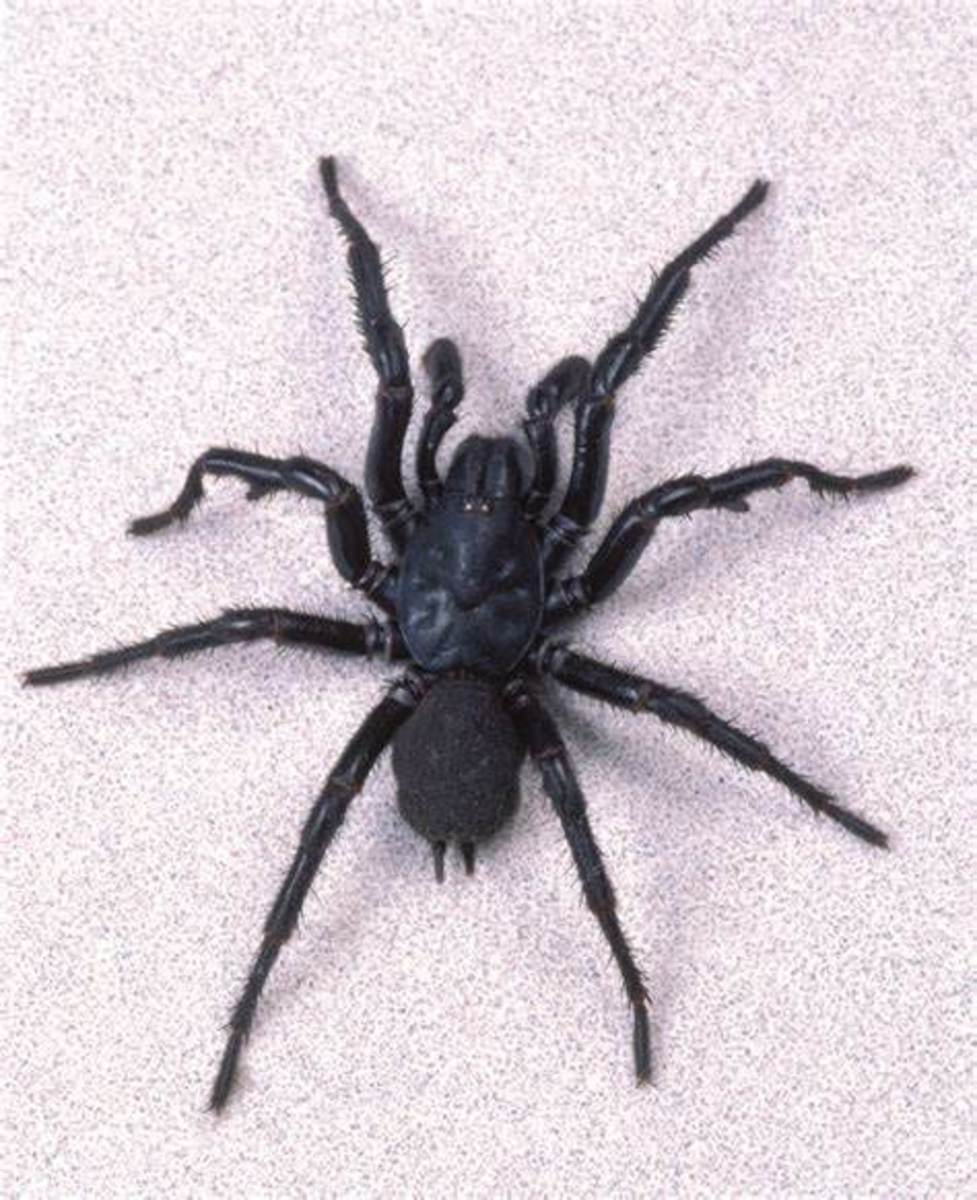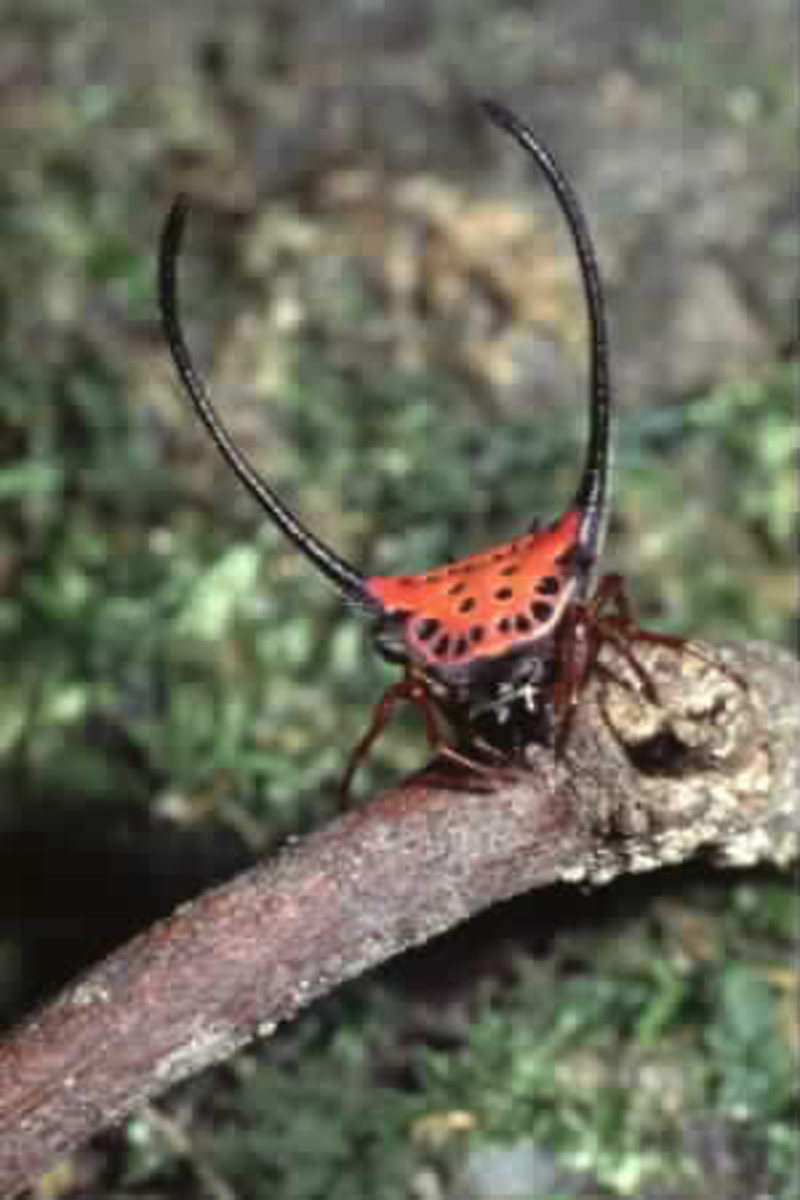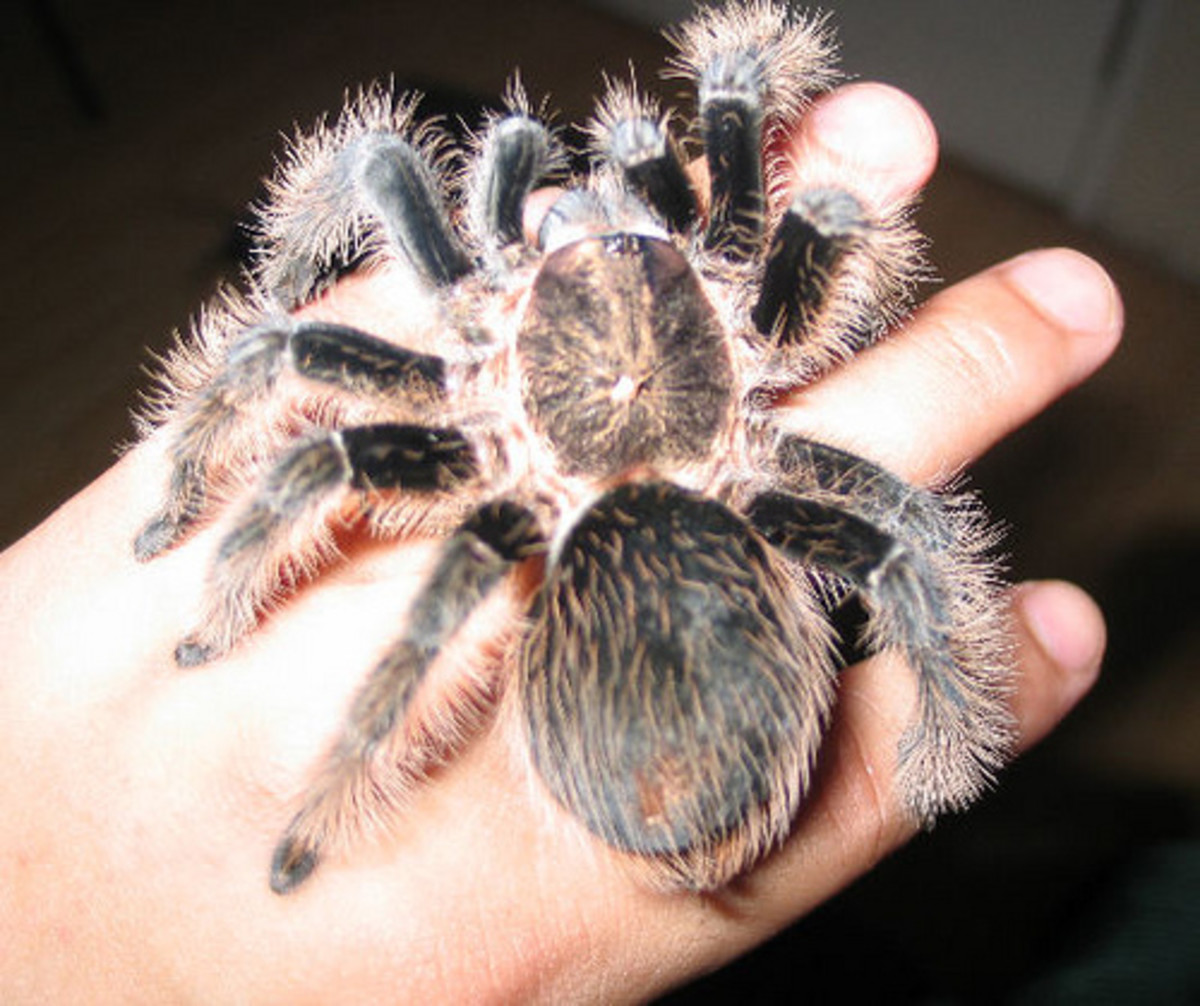About Tarantulas - Mexican Orange Knee, Brazilian Black, and Peruvian Pinktoe
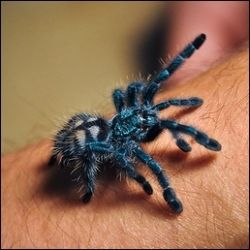
My Personal Experience with Working with and Caring For Tarantulas
I'd like to share my experience with you about appreciating and caring for tarantulas. My hope is that in sharing my experience with you, I may help dispel any fears you may have towards them and most other spiders.
I didn't always have a fascination and like of spiders, although, I cannot recall ever having a fear, or worse, a phobia. I think as a young child I was more interested in amphibians. However, one day, later on as a teenager I was thrown into the world of tarantulas. I was trained and become responsible for overseeing and caring for several dozen. There were many species. However, after I spent some time working with the different species, I developed a special liking for three. They stood out from the rest, and I was intrigued with their beauty, color, and docile behavior. These three are commonly called the Peruvian Pink-toed tarantula, the Mexican Orange Knee tarantula, and the Brazilian Black. In this article, I'll be introducing you to tarantulas through my own personal experience and these three species.

How I Got Involved with Tarantulas
My Internships at the Smithsonian's Natural History Museum
It started when I was 15. I was in the Outer Banks, North Carolina on a family vacation. Late at night I received a phone call. Now, this was back before cellphones and even pagers. So, who in the world could be calling me at the cottage. Who even knew the phone number? My grandmother! That's who :)
My grandmother was calling to let me know that I was accepted as an Intern for the upcoming summer at the Smithsonian. I had been in bed. Remember, it was late. Well, I sat straight up, asked herself to repeat it because I could hardly believe it, and then was overjoyed. Needless to say, I could barely get back to sleep that night.
I had filled out an application in previous months but knew it was a long shot. There are many Smithsonian museums with a lot of different departments. I did not get to pick where my internship was. When I discovered it was at the Natural History museum, I was really excited.
When I arrived home from our family vacation, I discovered that I would be working as an intern at the Insect Zoo with a title of Museum Aide.
This is how I got involved with tarantulas. On my first day there, I was trained on how to handle all of the more docile or harmless animals. Several of these were tarantulas. The science team there was so completely comfortable with these animals to the point that I too became comfortable. Soon, I was happily handling them myself.
Before We Continue Talking About Tarantulas...
Before I continue talking about my three favorite tarantula species, I thought I'd provide you with a book that is available for acquiring Internships. I highly recommend them. The exposure and learning experience is invaluable, and did I mention the exposure! It's priceless.
Please know that if you don't get the internship, you can volunteer. I have, and it's one of the most easy things to sign up for. I worked right alongside with many volunteers during my internships. It's amazing how many really cool places will let you volunteer.
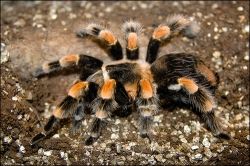
The Mexican Orange Knee Tarantula
Okay, Back to Tarantulas
One of the most ornate beautifully bold-patterned tarantulas is the Mexican Orange Knee, and as their name portrays, they are from Mexico and have what look like bright orange knees. They are also commonly called Red Knee, Red-kneed, Redknee or Orange Kneed tarantulas. To help with this confusion, it's probable best to know there scientific identification, which is Brachypelma smithi. I was introduced to them as Orange Knee. So, this is what I typically call them.
The Smithsonian has more of these big guys than any of the other species. They are all back behind the scenes in a rearing room where they are all very well taken care of. I know. This is what I did.
I also gave feeding demonstrations after afternoon to the public. In fact, I know I am somewhere out there in National Geographic footage that may have or may have not been used in a video. I was only sixteen and too shy to ask for more information about the film. Now, I really wish I would have!
The Orange Knee tarantulas were probable the most loved by the public. People were amazed by their beauty and docile disposition. One of the volunteers, a retired school teacher who was lovely, used to call one of the orange knees Fred Astaire. This tarantula always seemed to be waltzing as she laid her silk for her terrestrial home. (Yes, the female was given the male name, Fred.)
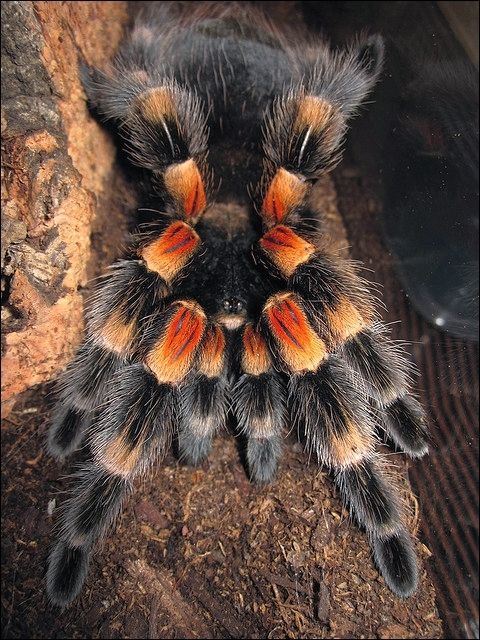
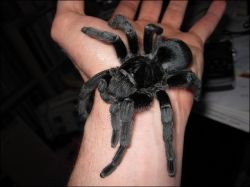
The Brazilian Black Tarantula
A Very Easy to Care for and Handle Docile Tarantula
This big fluffy soft all black tarantula is native to Brazil, and it is considered one of the most docile species of all tarantulas. It is a true gentle giant. It is definitely a tarantula for the beginner.
The photo here shows an adult female who has just molted. That alone shows she's a sweetheart. Some tarantulas can be a little moody after a molt, and you can clearly see here that she is comfortable in being handled.
If you don't know, molting is a process where the outside exoskeleton sheds. You did learn these words at one point, but if you've forgotten, we have an "endoskeleton." Our skeleton is made of a bone matrix and is on the inside of our body. With arthropods (arachnids are arthropods), the skeleton is on the outside of the body, and it is composed of proteins much like those proteins that make up your fingernails. For the animal to grow, it must shed its exoskeleton.
Shedding the exoskeleton is a delicate stressful process, and it usually takes a whole day for a tarantula to molt. A tarantula will lie on its back and seem motionless to you. However, there's a lot going on in the inside. The tarantula is slowly pulling all of its appendages and newly grown body parts into it's middle. Once this process is complete, the tarantula will break through and merge through the old skeleton's cephalothorax region. It will look as if you have two tarantulas! Most people like to save the molts.
The molts look like a complete intact tarantula, and they are just plain neat to have.
A Video of a Women Handling Her Brazilian Black Tarantula
Here you can see just how easy it is to handle a nice tempered easy-going tarantula.
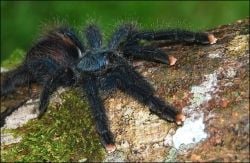
The Peruvian Pinktoe Tarantula
My Favorite Arboreal Spider
The Peruvian Pinktoe tarantula is also commonly called a Peruvian pink-toed tarantula, and the common pinktoe. It's scientific name is Avicularia avicularia. While it's name suggests that it is indigenous only to Peru, it is also indigenous to the southern Caribbean, and Costa Rica to Brazil.
I really like the pinktoes for several reasons. I like that they are arboreal, as most tarantulas are terrestrial. I like that they live in communities, as most tarantulas are solitary, and what I probably like most is that they have pink toes! At least, it looks as though they do.
Pinktoe tarantulas can vary in temperament. It really only depends on the individual tarantula. While most can be very docile and easy to handle, there's always that one that seems a little nervous and wants to be on the move when handled. They have a medium speed if they want to suddenly take-off, although, I don't think one would ever take off too far. However, one might try enough for you to lose control of the situation.
There is some debate as to whether or not pinktoes are for the beginner. I personally did not have any problems working with, caring for, or handling pinktoe tarantulas while I was at the Smithsonian. Even so, I would recommend them as a first time arboreal spider for the beginner of someone keeping arboreal spiders. Some experience with the slower very docile terrestrial spiders should be the pick for an absolute beginner.
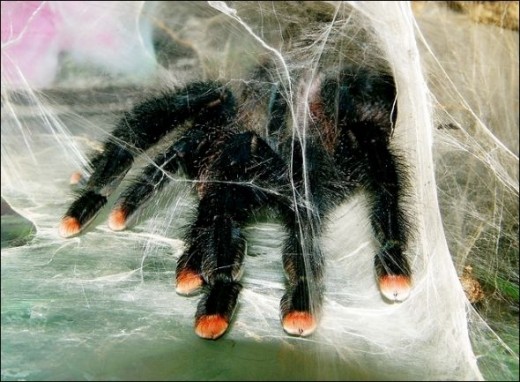
In this photo you can see the pinktoe at the opening of one of its tunnels. They are arboreal, and using their silk, weave tunnels in trees. Look at all of those pink toes! :) This is such a great photo.


